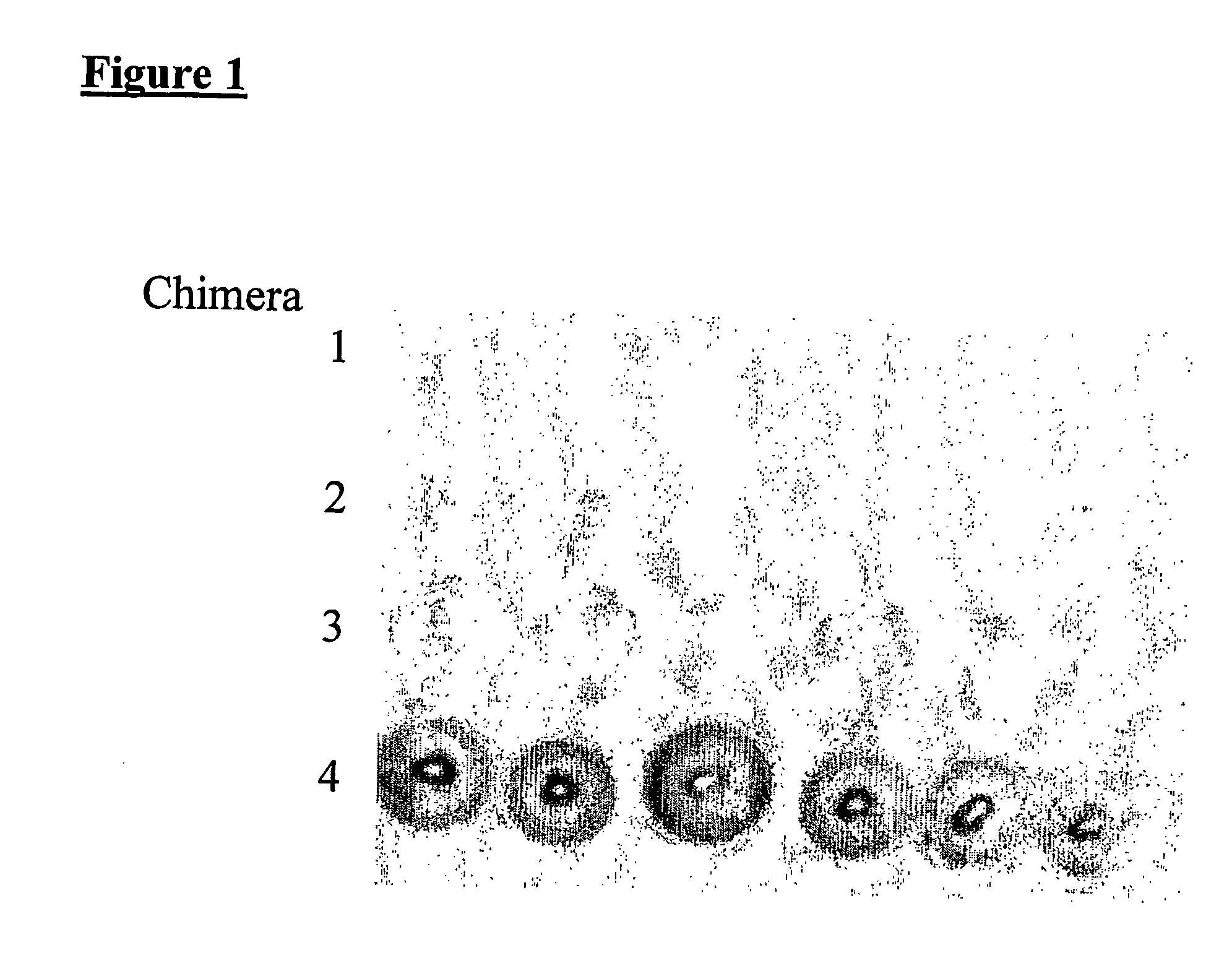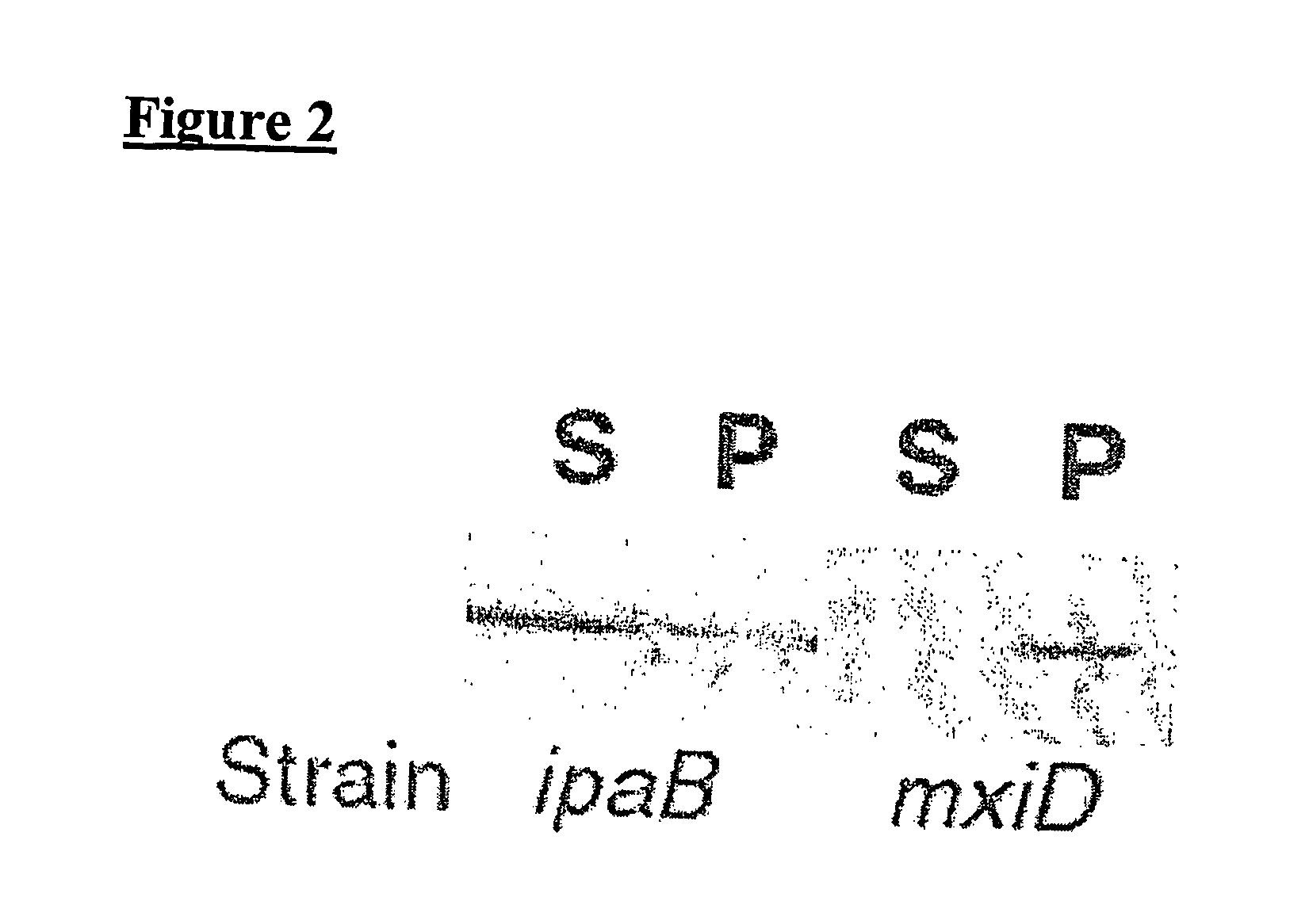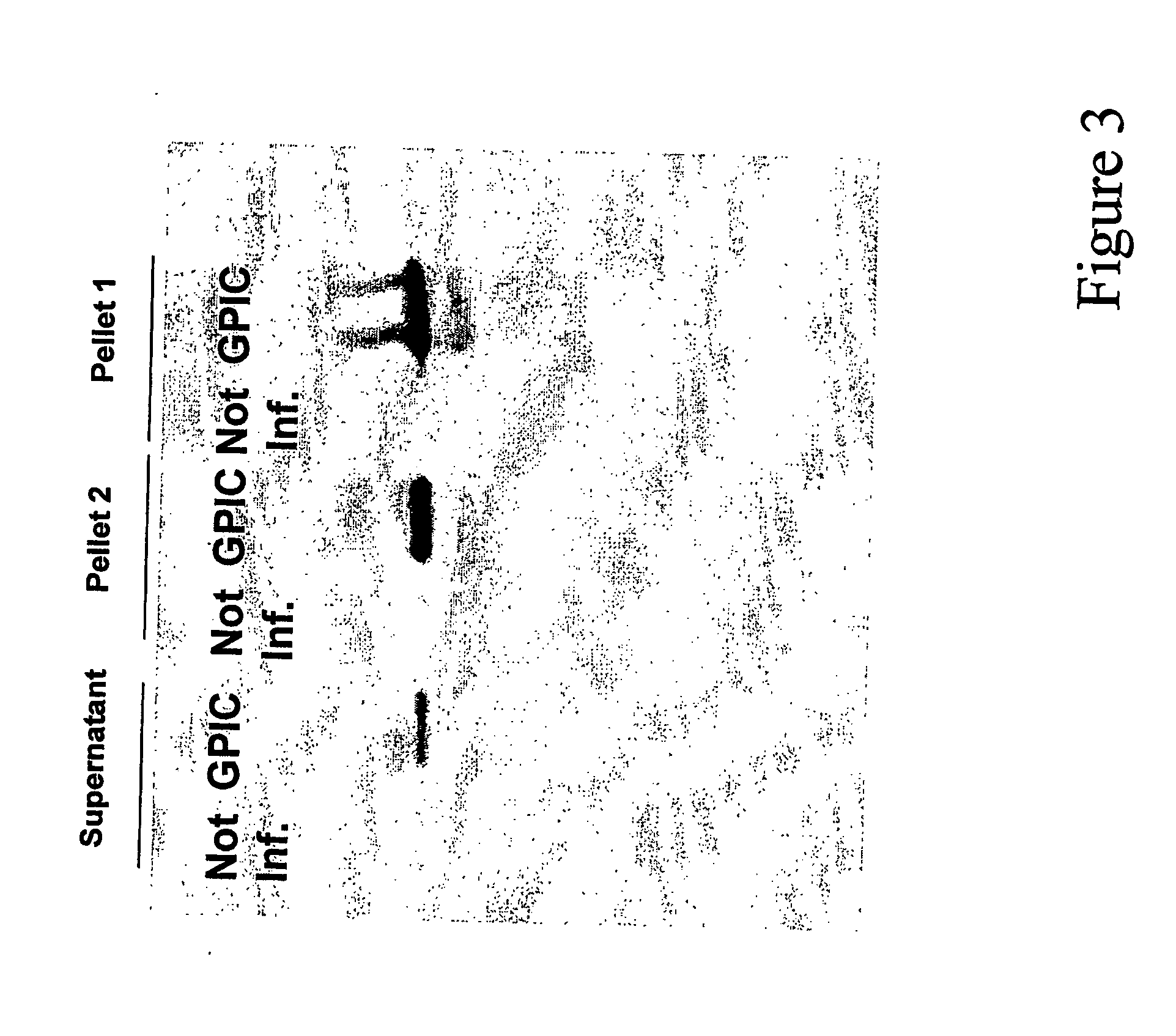Secreted chlamydia polypeptides, polynucleotides coding therefor, therapeutic and diagnostic uses thereof
a technology of chlamydia polypeptides and polynucleotides, which is applied in the field of secreted chlamydia polypeptides, can solve the problems of difficult direct testing of this hypothesis, inability to identify secreted proteins on the basis of their amino acid sequence, and inability to detect the secretion and insertion of proteins in the inclusion membran
- Summary
- Abstract
- Description
- Claims
- Application Information
AI Technical Summary
Benefits of technology
Problems solved by technology
Method used
Image
Examples
example 1
Materials and Methods
Bacterial Strains and Reagents
[0093] Strain M90T is the virulent, wild-type strain of S. flexneri 5 (Sansonetti et al., 1982). Strains SF401 and SF620 (deposited at C.N.C.M. with accession number I-2594) are derivatives of M90T in which the mxiD and ipaB genes, respectively, have been inactivated (Allaoui, A., P. J. Sansonetti, and C. Parsot. (1993). MxiD, an outer membrane protein necessary for the secretion of the Shigella flexneri 1pa invasins. Mol. Microbiol. 7: 59-68; Menard, R., P. Sansonetti and C. Parsot. (1994). The secretion of the Shigella flexneri 1pa invasins is activated by epithelial cells and controlled by IpaB and IpaD. EMBO J 13: 5293-302). The E. coli strain TG1 (Sambrook et al., Molecular Cloning: A Laboratory Manual, Cold Spring Harbor, N.Y., 1989) was used for plasmid constructions. S. flexneri and E. coli strains were grown in Luria-Bertani (LB). Ampicillin was used at 0.1 mg / ml. Monoclonal antibodies against the calmodulin-dependent ad...
example 2
[0114] Chlamydial genes were cloned by PCR for expression of full-length chlamydial proteins with a carboxy-terminal Histidine-tag. The forward and reverse primers contained additional NcoI and KpnI sites, respectively, to allow cloning of the PCR fragments between the NcoI and KpnI sites of the pQE-TriSystem expression vector (Qiagen). Sequences of the primers are given in Table II. Recombinant plasmids were amplified in E. coli TG1 and the sequences were checked by sequencing.
[0115] Plasmids were used to transform the strains SF401 and SF620 which are derivatives of M90T in which the mxiD and ipaB genes, respectively, have been inactivated (Allaoui et al, 1993; Ménard et al., 1993). Transformed colonies were isolated on plates containing 100 μg / ml ampicillin.
[0116] Analysis of secreted proteins was performed as previously described (Allaoui et al., 1993). Briefly, 1 ml of an overnight culture at 30° C. was inoculated in 30 ml of LB and incubated at 37° C. for 3 h. Bacteria were ...
example 3
[0118] Proteins Psi0705 and Psi0710 were expressed in E. coli with a carboxy-terminal Histidine tag and purified by standard divalent metal column chromatography methods according to the manufacturer's instructions (Qiagen). Purified proteins were used to immunize rabbits and specific antibodies against Psi0705 and Psi0710 were obtained. These antibodies were used to study Psi0705 and Psi0710 localization during Chlamydia infection.
[0119] A: By immunofluorescence, the present inventors determined that Psi0710 is associated with the membrane of the inclusion in HeLa cells infected with C. psittaci GPIC strain (FIG. 4). As a control, the present inventors determined that the pre-immune serum did not label infected cells, and that antibodies against the Major Outer Membrane Protein of Chlamydia did not label the membrane of the inclusion.
[0120] B: By Western Blot, the present inventors determined that Psi0705 is associated with the cytosolic fraction of HeLa cells infected with C. ps...
PUM
| Property | Measurement | Unit |
|---|---|---|
| Composition | aaaaa | aaaaa |
| Immunogenicity | aaaaa | aaaaa |
| Strain point | aaaaa | aaaaa |
Abstract
Description
Claims
Application Information
 Login to View More
Login to View More - R&D
- Intellectual Property
- Life Sciences
- Materials
- Tech Scout
- Unparalleled Data Quality
- Higher Quality Content
- 60% Fewer Hallucinations
Browse by: Latest US Patents, China's latest patents, Technical Efficacy Thesaurus, Application Domain, Technology Topic, Popular Technical Reports.
© 2025 PatSnap. All rights reserved.Legal|Privacy policy|Modern Slavery Act Transparency Statement|Sitemap|About US| Contact US: help@patsnap.com



